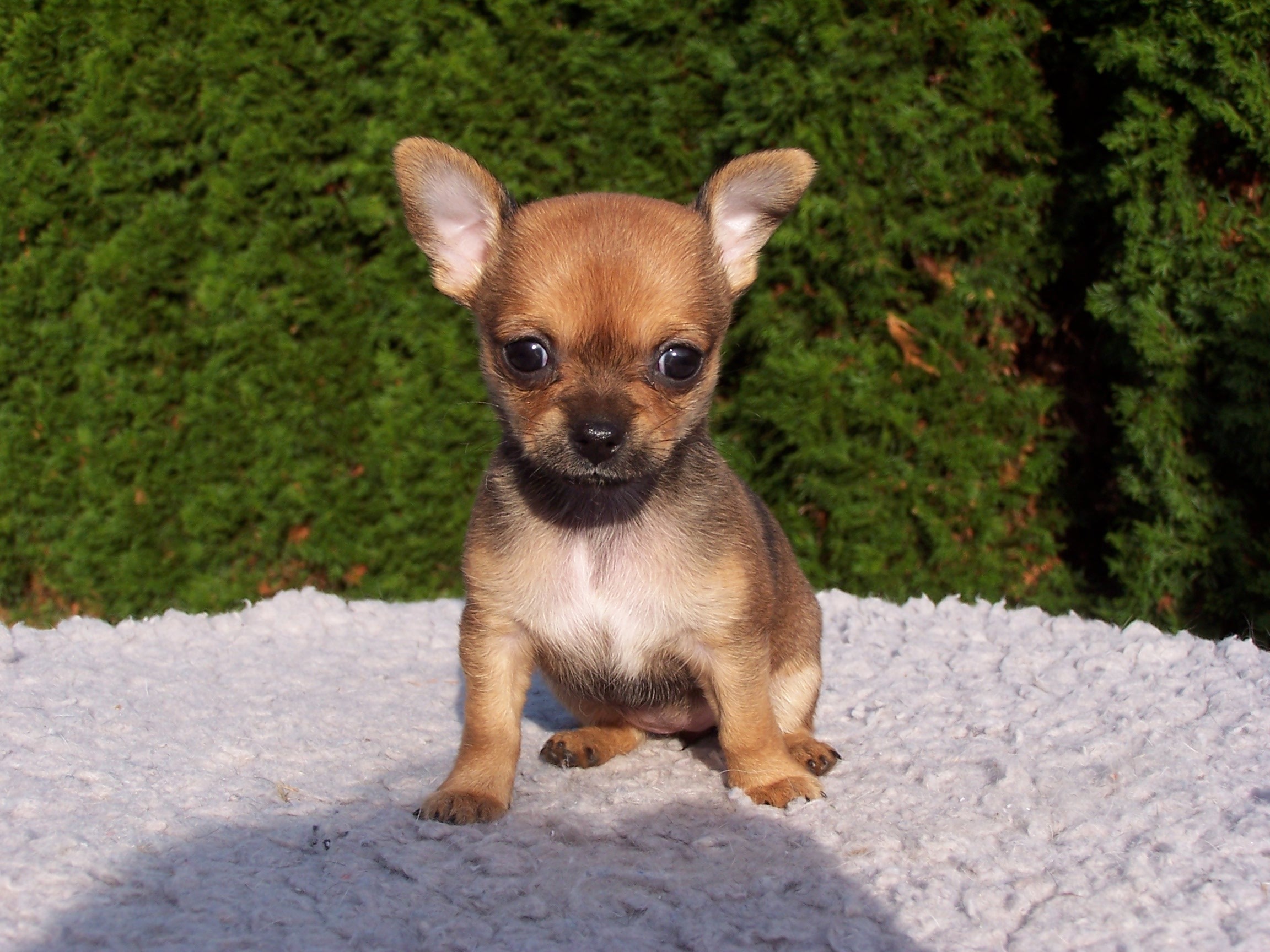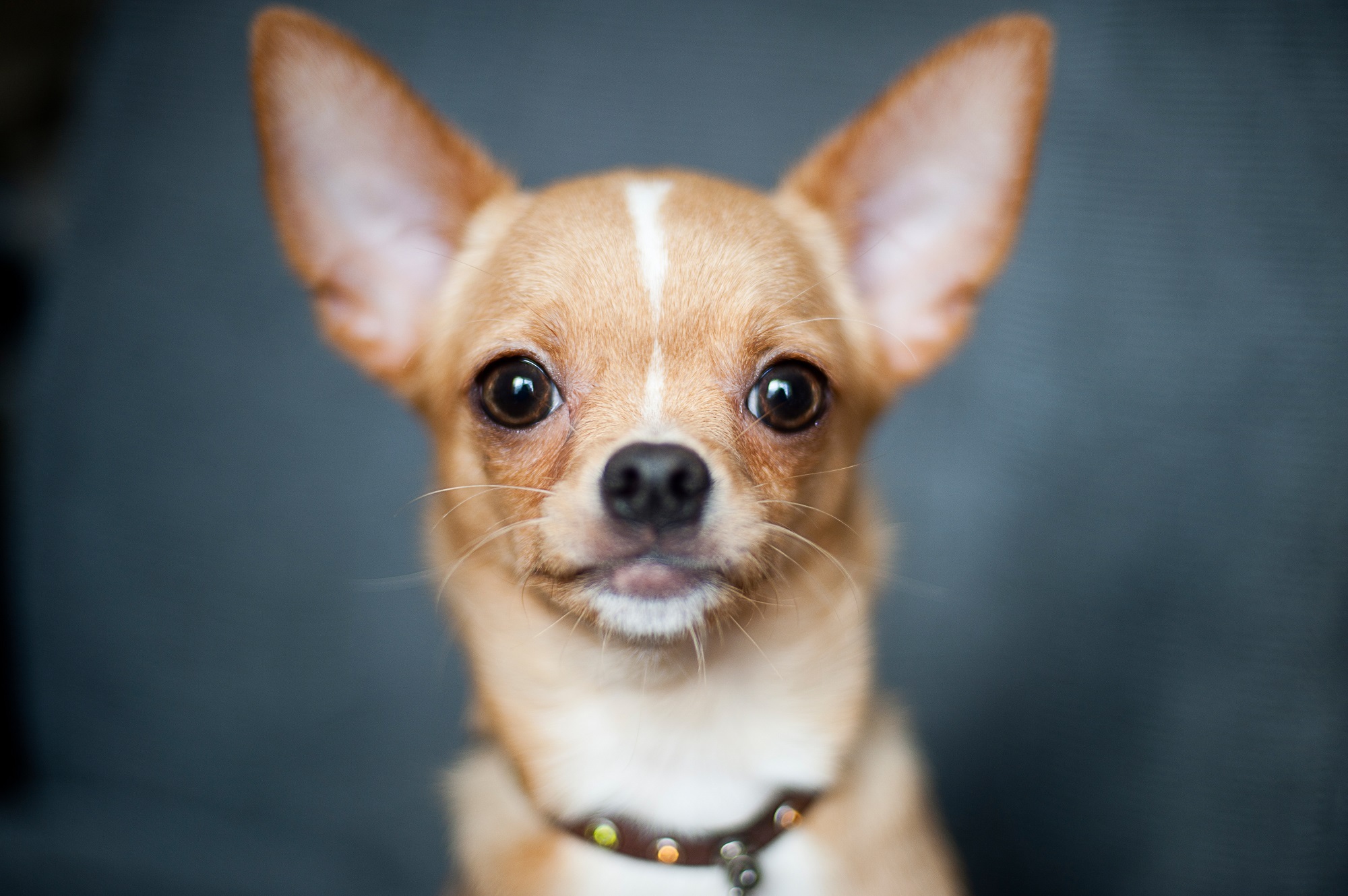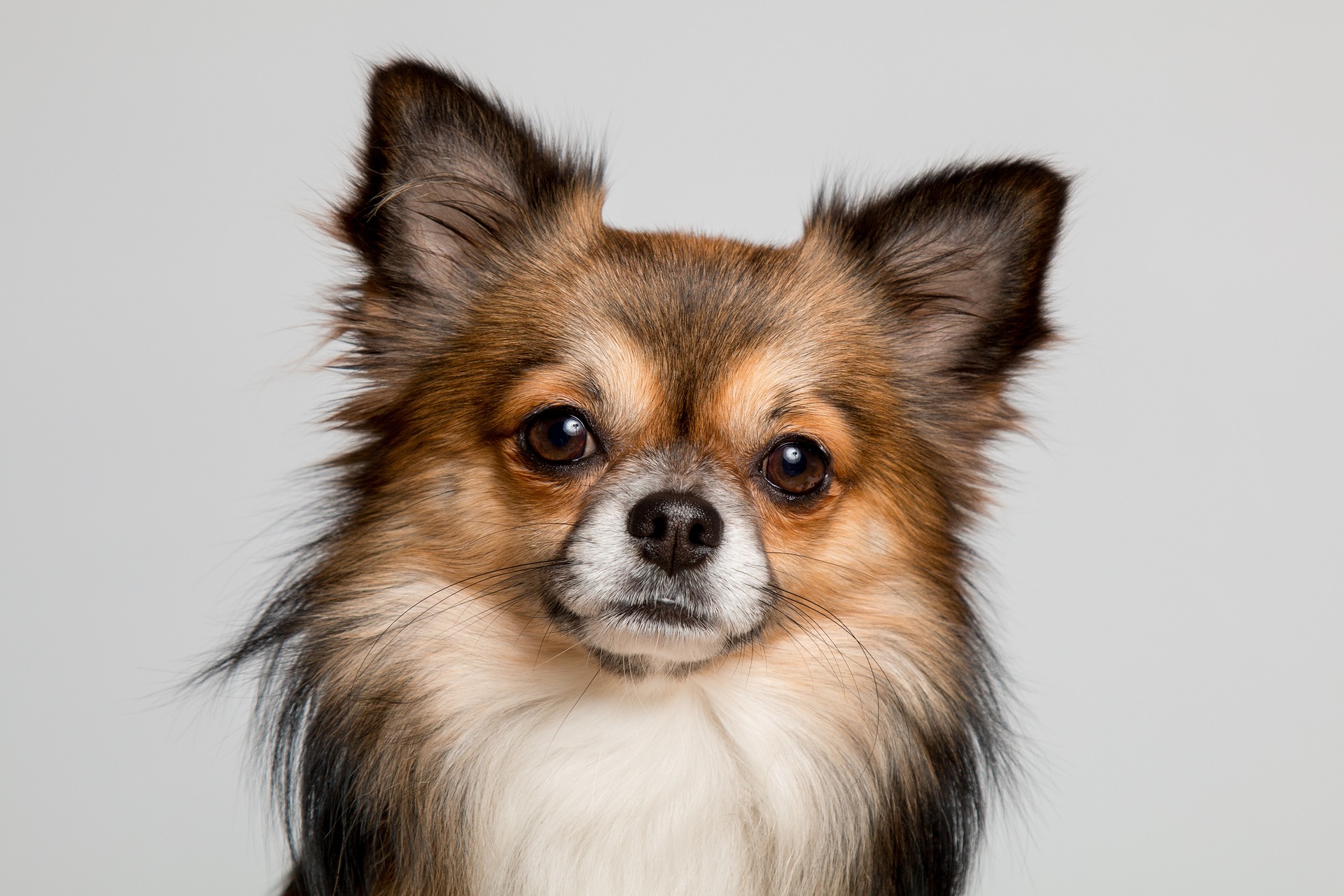Have you ever noticed the big, soulful eyes of a Chihuahua? It’s almost like they are begging for something from their owners. Chihuahuas are a beloved breed of dogs across the globe, with their big eyes being one of their most distinguishing features. No wonder these large and expressive eyes seem to capture humans’ attention and hearts all at once.
But why do Chihuahuas have such big eyes? Is it a result of biological evolution or human influence? In this article, we’ll look into why Chihuahuas have such large, expressive eyes that make us irresistibly drawn to them.
Brief History of the Chihuahua Breed

Chihuahuas are a fascinating breed of dogs with a mysterious and intriguing history. Despite being named after the Mexican state of Chihuahua, many people believe Central America to be the true home of the Chihuahua and that they have been there for thousands of years. European explorers documented Chihuahuas during the early 1800s and brought them to the United States around the same time.
Despite their small size, these dogs have been trendy throughout history; massive chihuahua statues have been found in various Mayan ruins throughout Mexico and Central America. Today, these little dog companions are beloved by many worldwide for their unique personalities and devotion to their owners.
Chihuahua Physical Features
Chihuahuas are one of the most miniature dog breeds, but they are certainly not lacking in personality. These tiny dogs are well-known for their tenacity, loyalty, and love for their human companions. But besides their charming characters, Chihuahuas also possess unique physical features that make them stand out among other breeds.
🐶Size
Chihuahuas are the smallest dog breed, with adult males typically weighing between 2-6 pounds and females between 2-5 pounds. Due to their tiny size, they are ideal for city people and those with limited living space. Despite their size, Chihuahuas are not delicate and can be challenging and resilient. Their small size makes them easily portable, so they are a great companion for those who like to travel.
🐶Coat
Chihuahuas can have a variety of coat types, ranging from short coats that are silky to smooth and long coats. The most common coat type is the soft coat, which is easy to maintain and comes in various colors, including white, cream, black, chocolate, and tan. The long-haired Chihuahua has a silky coat that requires regular grooming, but the extra effort is well worth it as it gives the breed a unique, elegant appearance. Chihuahuas come in various patterns, including solid, brindle, and spotted.
🐶Tail
Chihuahuas are distinctive due to their curly, spoon-shaped tail. This curled tail is not only cute, but it also serves as a natural warm blanket for the Chihuahua on cold days. The Chihuahua uses its tail as a means of expression as well. A high-held tail can indicate excitement, while a low-held tail can indicate fear or nervousness.
🐶Facial Features
One of the most distinctive physical features of the Chihuahua is their big, round eyes. These large eyes aren’t just cute to look at; they also play a major role in shaping the breed’s unique character. Chihuahuas are known for their expressive eyes, which can convey emotions such as happiness, fear, or surprise. In addition to their big eyes, Chihuahuas also have a short snout, which gives them a cute, wrinkled appearance.
Reasons Why do Chihuahuas Have Big Eyes

The eyes of the Chihuahua are disproportionately large to the size of its head. This physical feature is not only adorable, but it also serves a crucial purpose for these tiny dogs. We shall investigate why Chihuahuas have such large eyes.
👉Evolutionary Adaptation
Many of the defining characteristics of the modern Chihuahua are said to have developed from selective breeding efforts on the part of indigenous Mexicans seeking small, obedient dogs as pets. And while some may think that these tiny dogs were bred solely for companionship purposes, Chihuahua’s unique physical characteristics likely allowed them to adapt to their environment and become efficient hunters as well.
So why did these ancient breeders choose such large eyes? It may be due to the correlation between eye and brain size, with larger eyes being able to house larger retinas, resulting in improved vision and higher intelligence (which could come in handy when hunting). Furthermore, studies have shown that animals with more enormous eyes tend to perceive predators better and compete for food sources. This feature is almost certainly an inherited evolutionary adaptation.
👉Behavioral Traits
It is not just evolutionary adaptations that cause Chihuahua’s eyes to appear so large; it is also down to their behavioral traits. This small breed has a lot of grit and loves attention, which their eyes help express. When a chihuahua feels excited or scared, they can often widen their eyes to express these emotions. This expression can often make it look like they have even bigger eyes than usual, further accentuating the optical illusion!
👉Breed Standards
According to breed standards, prominent eyes are also desirable in Chihuahuas. Breeding standards are guidelines that determine the ideal appearance of a breed. In the case of Chihuahuas, big eyes are seen as a desirable trait because they enhance the breed’s cute and endearing appearance. Breeding programs often prefer Chihuahuas with big eyes, and they pass down this trait from generation to generation. As a result, it helped to ensure that Chihuahuas continue to have big, round eyes as a hallmark of the breed.
Role of Chihuahua’s Big Eyes in Survival
A Chihuahua’s large, wide eyes are one of the breed’s most defining characteristics. These big eyes serve a crucial role in the survival of Chihuahuas, and understanding the importance of these eyes can help us appreciate the resilience and adaptability of this beloved breed.
👁️Visual Acuity and Night Vision
Chihuahua’s large eyes give them an edge regarding visual acuity and night vision. These dogs have excellent vision, which helps them detect movement and other potential threats from far away. In addition, their larger eyes provide more light-gathering power than smaller ones, allowing them to see better in dimly lit areas or at night. It is beneficial when they need to quickly spot potential predators or prey while hunting or scavenging for food.
👁️Intimidation Factor
The size of a Chihuahua’s eyes can also be intimidating to predators or other animals that may be lurking around them. Their big eyes appear almost twice as large as those of other dogs, giving off the impression that they may be bigger and more powerful than they are. This intimidation factor can help protect them from danger and make them seem less attractive targets for predators.
👁️Communication Tool
In terms of body language, having large eyes helps Chihuahuas convey emotion quickly and effectively. That characteristic is especially useful when communicating with humans since we are adept at interpreting facial expressions. Dogs without prominent eyes often have difficulty conveying emotions – but not Chihuahuas! With one glance, they can convey excitement, contentment, fear, or joy – allowing them to better connect with humans and other animals.
Health Implications of Chihuahua’s Big Eyes

While big eyes are a defining characteristic of Chihuahuas and contribute to their survival, there are also health implications that come with having such prominent eyes. Chihuahuas can have various health issues related to their unusually large eyes, some of which are detailed here.
📌Cherry Red
The Chihuahuas’ bulging eyes are prone to a condition called the Cherry eye. It is a condition that affects the third eyelid of dogs, including Chihuahuas. The nictitating membrane, or “cherry eye,” is a tiny, triangular flap of tissue in the dog eye’s outer corner. It acts as a protective barrier for the eye and helps to spread tear production evenly over the eye’s surface. In dogs with cherry eyes, the third eyelid becomes enlarged and prolapses, meaning it pops out of its normal position and becomes visible as a red, fleshy bump in the corner of the eye.
Cherry eye is a relatively common condition in Chihuahuas and other small breeds, and it is typically a congenital (inherited) issue. Treatment for cherry eye typically involves surgical correction to reposition the third eyelid back into its normal position. In some situations, a surgical operation to stitch the third eyelid is required to prevent future prolapse.
📌Dry Eye Syndrome
With dry eye syndrome (also called keratoconjunctivitis sicca), the eyes cannot generate sufficient tears to lubricate and nourish the eye adequately. It can be a problem for Chihuahuas because their big eyes are more susceptible to evaporation of the tears. Additionally, Chihuahuas have flatter faces and shorter noses than other dog breeds, which can also contribute to dry eye syndrome by altering the flow of air around the eye. If neglected, dry eye syndrome can lead to severe discomfort, suffering, and even permanent vision loss. It is vital for Chihuahua owners to be aware of the signs of dry eye syndrome, such as redness, discharge, and squinting, and to seek veterinary attention if they notice any changes in their pet’s eye.
📌Corneal Ulcers
Corneal ulcers are sores that develop on the clear outer layer of the eye. Injury, infection, or other eye disorders are potential triggers. Big eyes in Chihuahuas are often more prominent and bulge out of their sockets, leaving more eye surfaces exposed and vulnerable to injury. This increased exposure to the environment increases the risk of foreign objects, such as dust, dirt, or grass seeds, getting into the eye and causing a corneal ulcer.
Corneal ulcer in Chihuahuas is highly unpleasant, and if left untreated, they can cause lifelong vision loss. Treatment for corneal ulcers typically involves using antibiotics to treat infections and anti-inflammatory medications to reduce pain and swelling. In some cases, surgical removal of the injured corneal tissue may be necessary to facilitate healing.
Taking Care of Chihuahua’s Eyes
Taking care of a Chihuahua’s big, beautiful eyes is essential in keeping your pet healthy and happy. Here are some tips for keeping your Chihuahua’s eyes healthy:
✔️Regular Eye Exams
Regular eye exams by a veterinarian can help detect and prevent eye problems early on. Your veterinarian can also help you determine the best eye care routine for your Chihuahua based on its individual needs.
✔️Cleaning the Eyes
Chihuahuas have tear ducts that don’t always keep up with the amount of tears their eyes produce. As a result, gunk can accumulate around the eye and lead to irritation or infection if not properly cleaned. Clean the Chihuahua’s eye area with a wet towel, being careful not to rub the eye itself. Avoid eye irritants: Keep your Chihuahua away from dust, smoke, and other irritants that can cause eye irritation and increase the risk of eye infections.
✔️Provide a Calm Environment
Since Chihuahuas’ wide eyes are so sensitive, it’s crucial to provide a calm atmosphere for them to rest in when caring for them. Eye discomfort or even inflammation can result from excessive stimulation like loud noises or bright flashing lights. Therefore, offering a peaceful and low-stimulation environment is critical so that the Chihuahua’s eyes are not overworked or overstressed.
✔️Eye Protection
It is crucial to protect Chihuahua’s eyes from potential harm. If you plan on taking him out for extended periods in extreme weather conditions such as snow or rain, make sure he wears some kind of protective eyewear, such as doggy sunglasses or goggles. It will help prevent damage from wind and debris while also protecting his sensitive vision from bright light or UV rays.
✔️Providing a Balanced Diet
A lack of certain vitamins and minerals can lead to eye problems or decrease the quality of vision. Therefore, feeding them a well-balanced diet that includes all necessary nutrients such as omega-3 fatty acids, vitamin A, and zinc is needed. These nutrients are essential for maintaining healthy eyes and reducing the risk of long-term eye damage or diseases. Additionally, proteins are vital in supporting the structure of their eyes, so it’s important to include lean sources in their diet.
✔️Eye Drops and Ointments
In cases where your dog’s eyes require extra care, your vet may recommend ointments or eye medications to treat any infection or irritation. Incorrect use of these medications might worsen skin irritation, so read and follow the dosing instructions carefully! In the event that you see any behavioral changes after using an ointment or drop, consult your veterinarian immediately.
Frequently Asked Questions
Q. What color are the eyes of a newborn Chihuahua?
The natural eye color of a newborn Chihuahua can vary. Some Chihuahuas are born with dark brown or black eyes, while others may have light blue or green eyes. Several factors, including genetics, affect a Chihuahua’s final eye color as it develops. Some Chihuahuas may have eyes that change color over time, while others may have eyes that remain the same color throughout their lives.
Q. What could be the reason for my Chihuahua having smaller eyes?
Reasons for a Chihuahua’s tiny eyes vary. Some of the common factors include genetics, age, and health conditions. Some Chihuahuas may have a naturally smaller eye size, while others may experience a reduction in eye size as they age or as a result of certain health conditions. Furthermore, excess skin or wrinkles around the eyes, as well as changes in the structure of the face, might make a Chihuahua’s eyes appear smaller.
Q. How can I determine the type of Chihuahua that I have?
You can tell what kind of Chihuahua you have by looking at its:
- Pedigree: One of the most reliable ways to determine the type of Chihuahua you have is by looking at their pedigree. A Chihuahua’s pedigree can provide information about its breed and lineage, which can help you determine its type.
- Physical Characteristics: A Chihuahua’s physical traits are another indicator of its breed. For example, some Chihuahuas are bred for their small size, while others are bred for their long, flowing coats.
- Behavior and Temperament: The behavior and temperament of a Chihuahua can also provide clues about their type. Some Chihuahuas are known for their energetic and playful personalities, while others are more laid-back and calm.
- Expert Opinion: Finally, you can also seek the opinion of an expert, such as a veterinarian or a breed-specific specialist, who can help you determine the type of Chihuahua you have based on their physical characteristics and behaviors.
Q. At what age do Chihuahuas reach their full size?
Chihuahuas typically reach their full adult size by the time they are 2 years old, while some may continue to put on weight and grow taller until the age of 3. Remember that Chihuahuas can vary greatly in both growth pace and size based on things like nutrition, exercise, and general health. If you want to provide your Chihuahua with the best possible treatment, it’s best to talk to a vet about it.
Q. Can a Chihuahua’s eyes pop out of their socket?
No, a Chihuahua’s eyes can’t pop out of their socket. While it may seem like Chihuahuas have large, bulging eyes, they are securely anchored in their sockets by ligaments and muscles.
Q. How does eye size affect behavior?
The size of a dog’s eyes can affect its behavior as well. Dogs with larger eyes often appear less intimidating than those with smaller eyes because they seem less threatening or aggressive. Interestingly, studies have shown that people tend to find dogs with enormous eyes more attractive than smaller ones! Owners of large-eyed breeds may be more likely to receive positive attention from others and be able to form stronger social bonds with their pets as a result.
Final Words
Chihuahua’s big eyes aren’t just cute – they serve an essential purpose! Not only do they give these dogs excellent vision even in low-light conditions, but the larger size also gives them better peripheral vision and keeps them safe while exploring the world around them. So next time you look into your pup’s big beautiful peepers, thank nature for giving him this fantastic advantage!
Here at ILoveChihuahua, we share our personal experiences as owners of this feisty breed. We talk about recommended methods, dog supplies picks, and advice on common Chihuahua problems. Our goal is to promote responsible dog ownership, so there would be fewer Chihuahuas in shelters.


